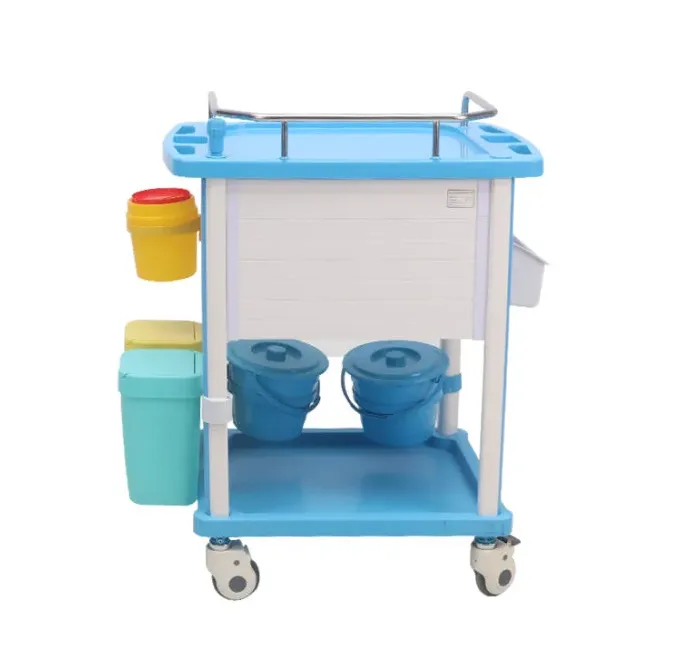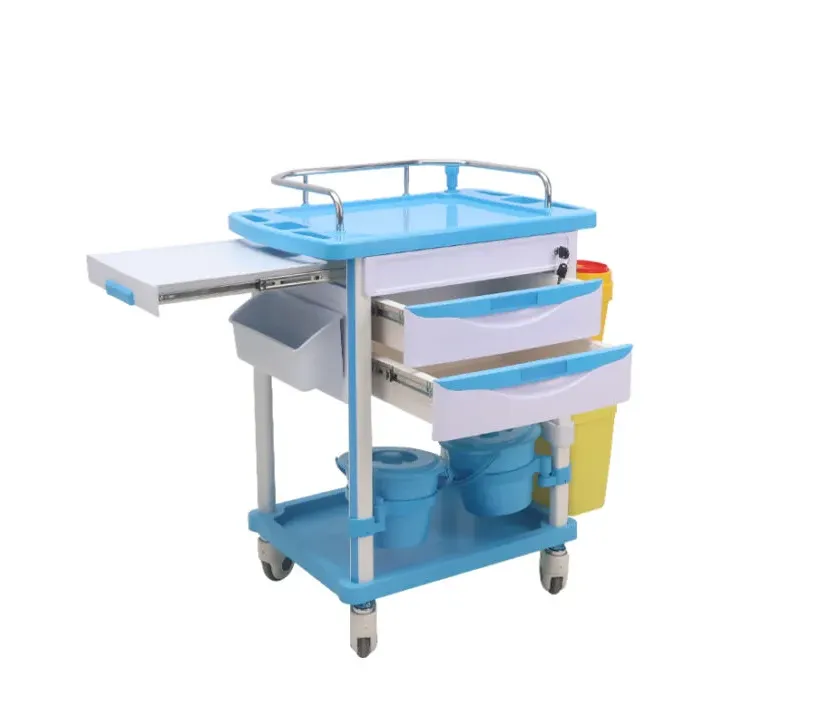Medical Trolley - Stainless Steel, Hygienic, Smooth-Rolling
Field Notes on a Workhorse: The ZF-T306 ABS Treatment Medical Trolley
If you’ve spent any time in a busy ward, you know the cart is either your best friend or a constant annoyance. The ZF‑T306 from Zhouhu Village, Jizhou Zone, Hengshui City (Hebei Province, China) lands firmly in the first camp. Its ABS-injection molded countertop is the headline: smooth, non-porous, heat-tolerant, and—importantly—resistant to the cocktail of disinfectants clinicians actually use, not just the ones in brochures.

What’s moving in the market
Three trends keep popping up: modularity, wipe-clean durability, and quieter mobility. Hospitals are standardizing across departments, so a Medical Trolley that clicks with different modules (bins, sharps holders, glove boxes) is winning. Also, sustainability is not just a press release anymore; ABS that survives aggressive cleaning extends service life and keeps carts out of landfills. And casters? If they squeak during night rounds, staff won’t forget it.
Product snapshot: ZF‑T306 ABS Treatment Medical Trolley
| Parameter | Spec (≈ real-world) |
|---|---|
| Model | ZF‑T306 ABS Medical Treatment Trolley |
| Countertop | One-piece ABS injection molding; smooth surface; heat and corrosion resistant |
| Frame & Body | ABS panels with metal reinforcement; rounded edges for impact safety |
| Dimensions | ≈ 750–900 mm (L) × 450–550 mm (W) × 900–1000 mm (H) |
| Load rating | ≈ 120 kg distributed (lab-tested; use-case may vary) |
| Drawers/Storage | Multi-drawer layout with dividers; side bins optional |
| Mobility | 4 medical-grade casters, ≥2 with brakes; low-noise design |
| Cleaning compatibility | Common hospital wipes: hypochlorite, quats, 70% IPA (check IFU) |

Process flow, tests, and service life
Materials: ABS resin (countertop, body panels), coated steel reinforcement, medical-grade casters. Methods: overall ABS injection molding for the top (fewer seams = fewer hiding places for bioburden), precision assembly, and torque checks on fasteners. Testing: chemical wipe tests (ASTM D543 approach), caster endurance over thresholds (≥10,000 cycles), drawer cycle test (≈20,000 open/close), and tip resistance with full drawer extension. Quality system under ISO 13485. Expected service life: 5–7 years with routine maintenance; I’ve seen carts push past that when the cleaning protocol is consistent.
Where it fits
- General wards and day surgery: meds and dressing changes on a compact Medical Trolley.
- Emergency and triage: swap-in modules for rapid access supplies.
- Outpatient clinics and IVF labs: quiet casters matter here, surprisingly.
- Veterinary and dental: disinfectant-heavy cleaning; ABS top holds up well.
One nurse manager told me, “we stopped fighting sticky drawers.” It sounds small, but in 12-hour shifts, those little frictions add up.

Customization and compliance
Options usually include color coding, lock types (keyed, central, or optional electronic), sharps box brackets, glove dispensers, waste rings, and IV poles. Certifications/standards context: ISO 13485 QMS, risk management to ISO 14971, plastic chemical resistance per ASTM D543, and caster performance aligned with ISO 22883 requirements. Real-world policies vary by hospital, so do a quick check with Biomedical Engineering.
Vendor comparison (quick take)
| Vendor | Strengths | Considerations |
|---|---|---|
| Zhaofa Medical (ZF‑T306) | One-piece ABS top; strong value; Hebei-based factory supports OEM/ODM | Lead time varies by customization; confirm caster spec early |
| Vendor A (Premium EU) | Extensive accessory ecosystem; rapid parts shipping | Higher unit cost; MOQ on special colors |
| Vendor B (US Mix-Material) | Metal-frame rigidity; hospital network contracts | Heavier; may transmit more noise on tile floors |
Case notes
A county hospital rolled out 30 units in treatment bays. After six months, facilities reported zero cracked tops and fewer caster replacements than their previous carts. Many customers say the ABS surface stands up better to bleach wipes than laminated wood-core designs; I guess that aligns with the lab data, but the field proof is what matters.
Final thought
No cart solves everything, but this Medical Trolley hits the practical notes—cleanability, stability, and quiet movement—without drama. In fact, that’s exactly what you want in a high-churn ward environment.
- ISO 13485:2016 — Medical devices — Quality management systems — Requirements for regulatory purposes.
- ISO 14971:2019 — Medical devices — Application of risk management to medical devices.
- ASTM D543 — Standard Practices for Evaluating the Resistance of Plastics to Chemical Reagents.
- ISO 22883:2004 — Castors and wheels — Requirements for institutional applications.




































